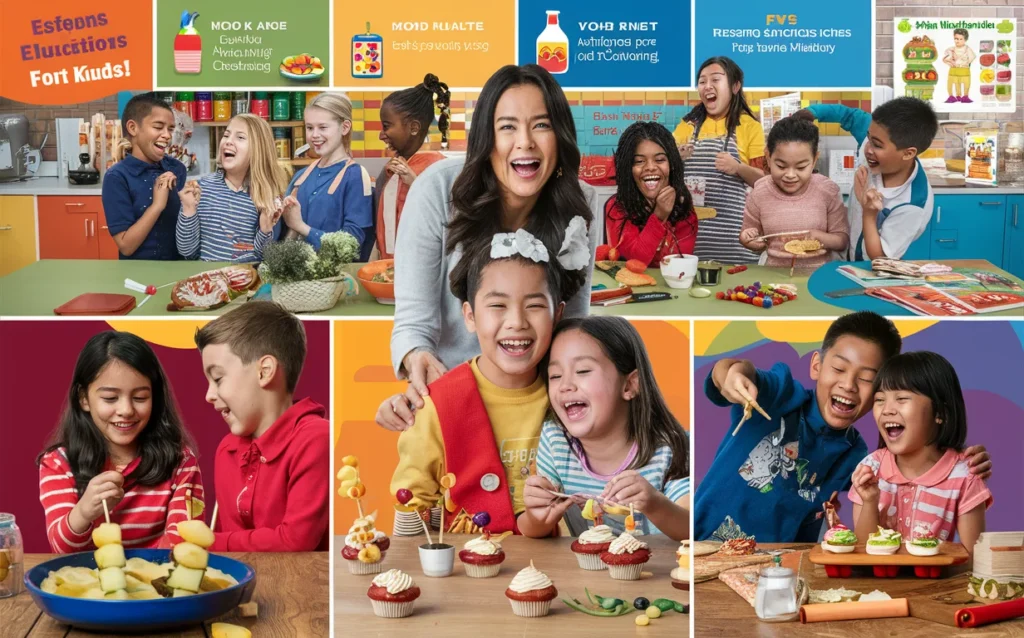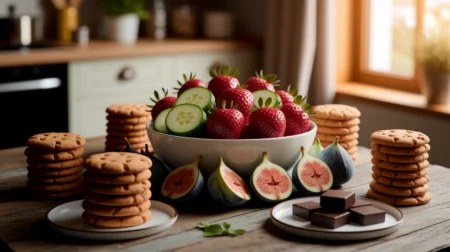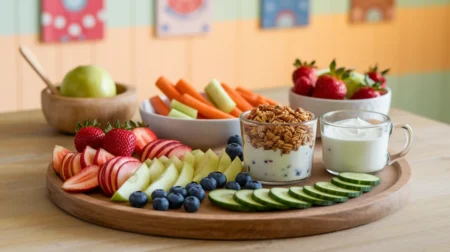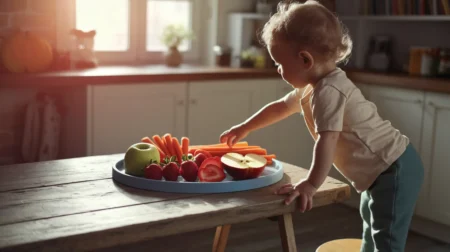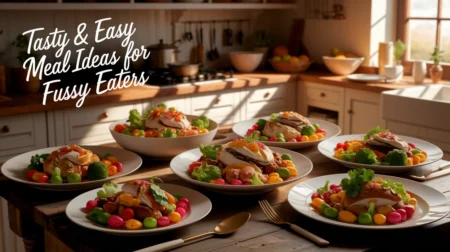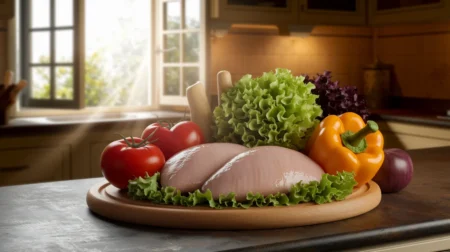Fun and Educational Food Activities for Kids
Key Takeaways
- Food activities for kids can be engaging, educational, and beneficial for their development.
- Such activities encourage creativity, motor skill development, and healthy eating habits.
- Hands-on food activities can teach children about nutrition, teamwork, and cultural food traditions.

Why Food Activities Are Important for Children
Food activities are a great way to educate kids about nutrition, build their cooking confidence, and inspire creativity. Children learn through hands-on experiences, and food-based activities provide opportunities for sensory play, problem-solving, and team collaboration. Involving kids in the kitchen also helps establish lifelong healthy eating habits.
Benefits of Food Activities:
- Promote Healthy Eating: Kids are more likely to try foods they’ve prepared themselves.
- Encourage Creativity: Designing their own recipes or arranging food art builds confidence.
- Enhance Fine Motor Skills: Tasks like stirring, cutting (with safe tools), and arranging develop motor precision.
Fun Food Activities for Kids at Home
1. DIY Fruit and Veggie Faces
Create a fun and nutritious snack by turning fruits and vegetables into edible art. Kids can use their favorite fruits and veggies to design faces, animals, or scenes on a plate.
Supplies Needed:
- Sliced fruits (bananas, strawberries, grapes)
- Veggies (cucumber slices, carrot sticks)
- A plate as a canvas
Benefits:
- Encourages kids to eat more fruits and vegetables.
- Enhances creativity and motor skills.
2. Make-Your-Own Pizza Night
Allowing kids to create their own mini pizzas can teach them about balanced meals and give them a sense of accomplishment.
Instructions:
- Use small whole-grain tortillas, bagels, or English muffins as a base.
- Provide a variety of toppings: cheese, tomato sauce, veggies, and protein options.
- Let each child customize their pizza before baking.
3. Food Rainbow Sorting
This activity teaches kids about different food groups and the importance of a varied diet.
Instructions:
- Have kids sort foods (real or toy versions) into colors of the rainbow.
- Discuss the nutritional benefits of each color group.
4. Fruit Smoothie Lab
Let kids experiment with different fruit combinations to make their own smoothies. Add yogurt, milk, or a dairy-free alternative for a creamy base.
Instructions:
- Provide a selection of fruits (e.g., berries, bananas, mangoes).
- Encourage kids to mix and match flavors.
- Blend together and enjoy!
5. Food Sculptures
Using soft foods like cheese, marshmallows, grapes, and toothpicks, kids can build their own edible sculptures.
Benefits:
- Promotes imaginative play.
- Strengthens hand-eye coordination.
6. Homemade Trail Mix Station
Allow kids to customize their own trail mix from a selection of nuts, dried fruits, seeds, pretzels, and other healthy mix-ins.
Tip: Teach children about portion control by using measuring cups.
7. Taste-Testing Around the World
Introduce children to different cuisines and cultural foods by setting up a taste-testing station. Discuss where the foods come from and their cultural significance.
Food Activities for Elementary Students
8. Edible Science Experiments
Combine learning and fun by doing science experiments with food.
Examples:
- Baking Soda and Vinegar Volcanoes: Add food coloring and candy to create a “lava flow.”
- Freezing and Melting Experiments: Observe how ice cream melts faster than frozen fruit pops.
9. Build a Balanced Plate Game
Teach children about balanced eating by having them build a plate with proper portions of protein, grains, fruits, and vegetables using toy or paper food items.
10. Cooking Competitions
Host a friendly cooking competition where kids create their own dishes based on a theme (e.g., best sandwich). Provide age-appropriate tools and ingredients.
Learning Outcomes:
- Enhances teamwork and time management.
- Promotes problem-solving.
Food Activities for Students in Schools
11. Garden-to-Table Program
Planting and harvesting a school garden teaches children where their food comes from, followed by cooking meals using garden-grown produce.
12. Nutrition Label Scavenger Hunt
Have students search food labels to learn about nutritional content, serving sizes, and ingredients.
13. Food-Themed Art Projects
Use pasta to create jewelry or create food-themed crafts and collages.
Tips for Engaging Kids in Food Activities
- Prioritize Safety: Use kid-safe utensils and supervise closely.
- Make It Age-Appropriate: Tailor activities to match the child’s developmental stage.
- Incorporate Learning: Talk about nutrition, science, or culture while cooking.
Conclusion
Food activities for kids provide a hands-on, interactive way to teach valuable life skills, foster creativity, and instill healthy habits. By involving kids in fun and educational food experiences, you nurture their curiosity, independence, and taste preferences.
FAQ
1. How can I make food activities fun for my child?
Allow kids to explore ingredients, encourage creativity, and let them make choices to keep activities engaging.
2. What are simple food activities for toddlers?
Fruit and veggie faces, make-your-own mini pizzas, and sensory food play are great for toddlers.
3. Are food activities safe for young kids?
Yes, with proper supervision and age-appropriate tools, food activities can be safely enjoyed by all ages.
4. How do food activities benefit children?
They improve motor skills, encourage healthy eating, enhance creativity, and provide an opportunity for hands-on learning.





